

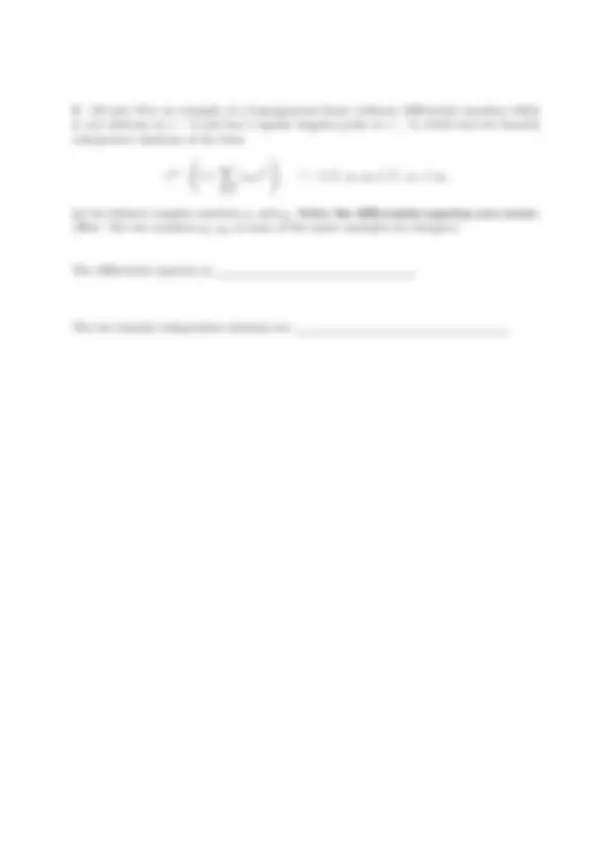
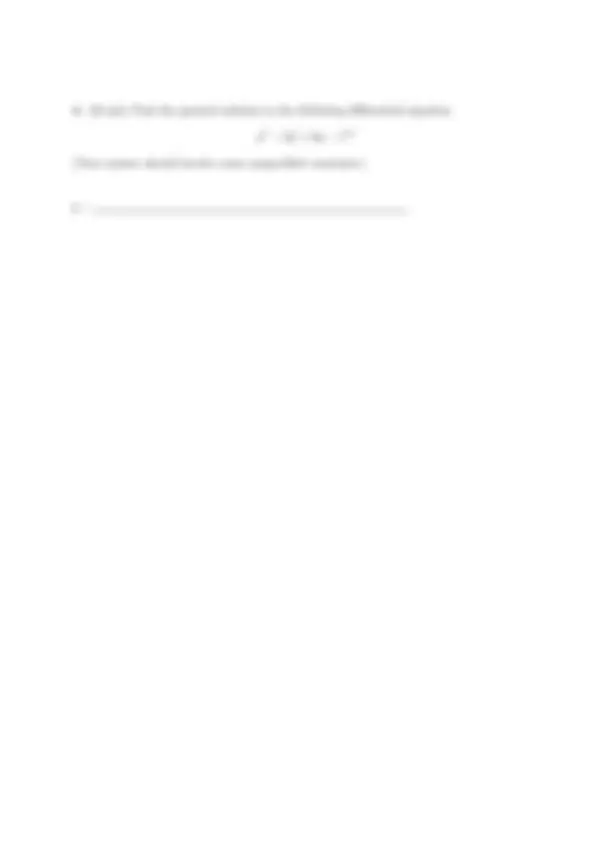
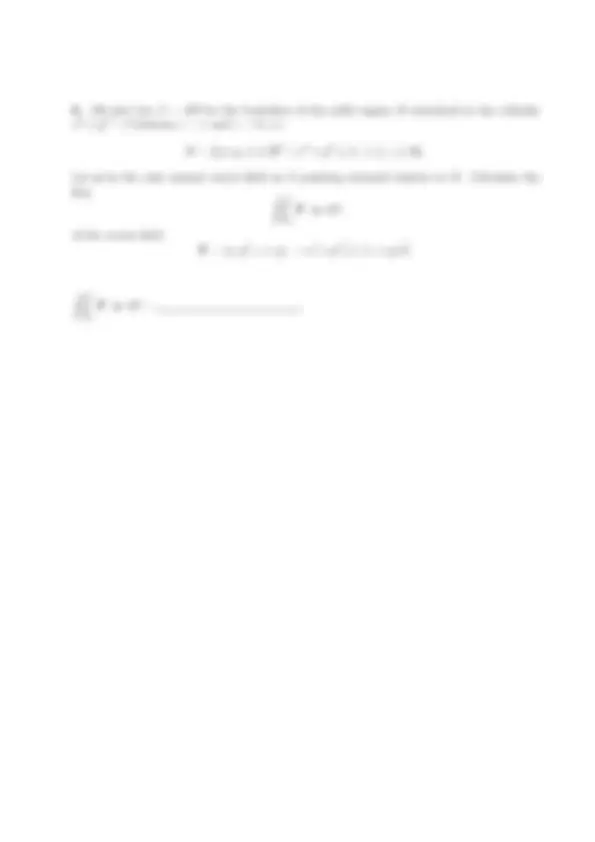
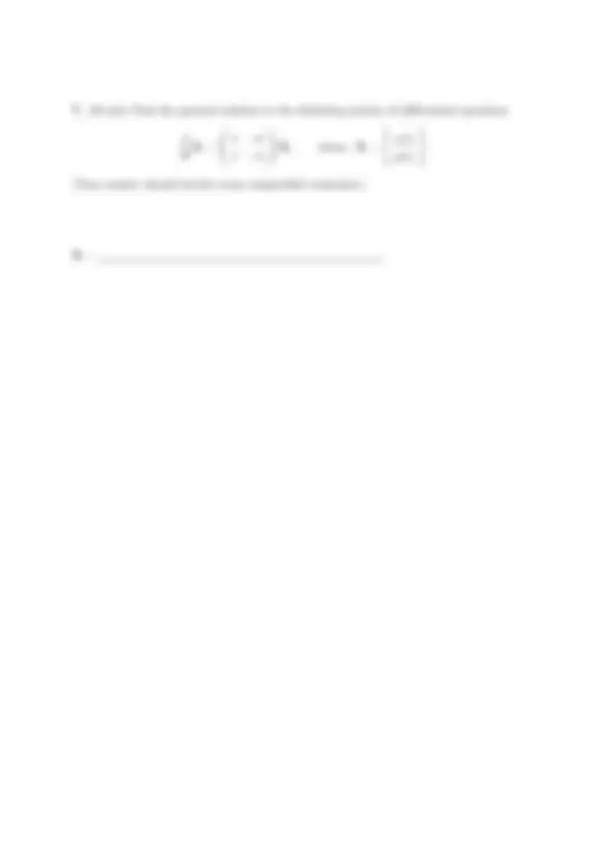
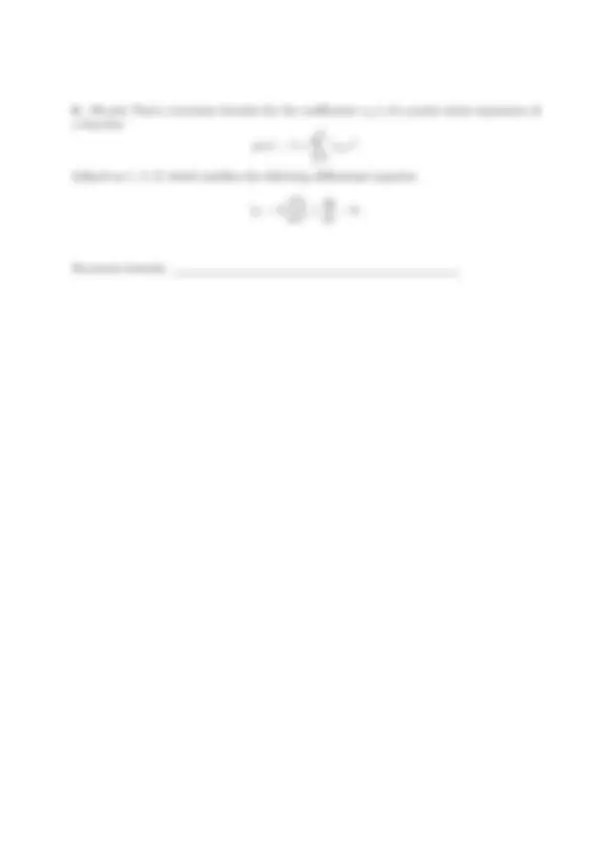
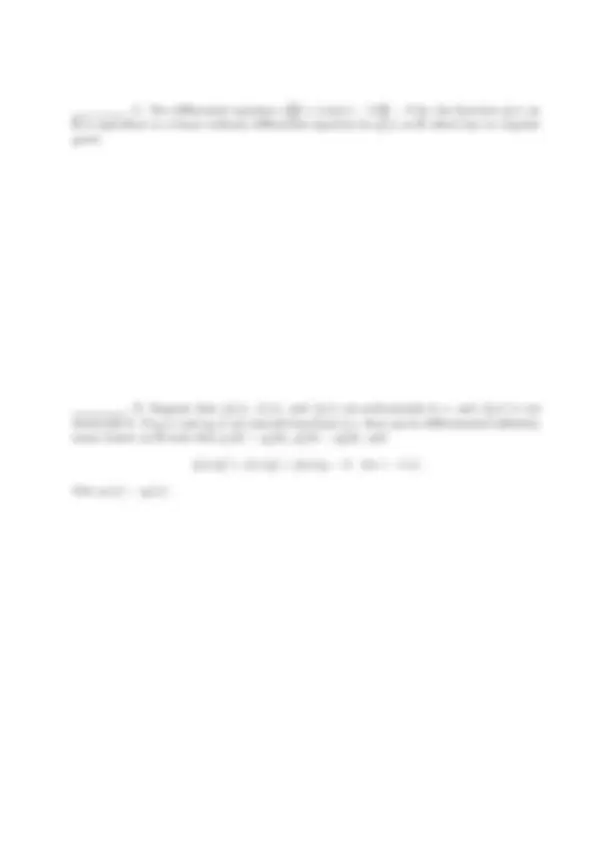
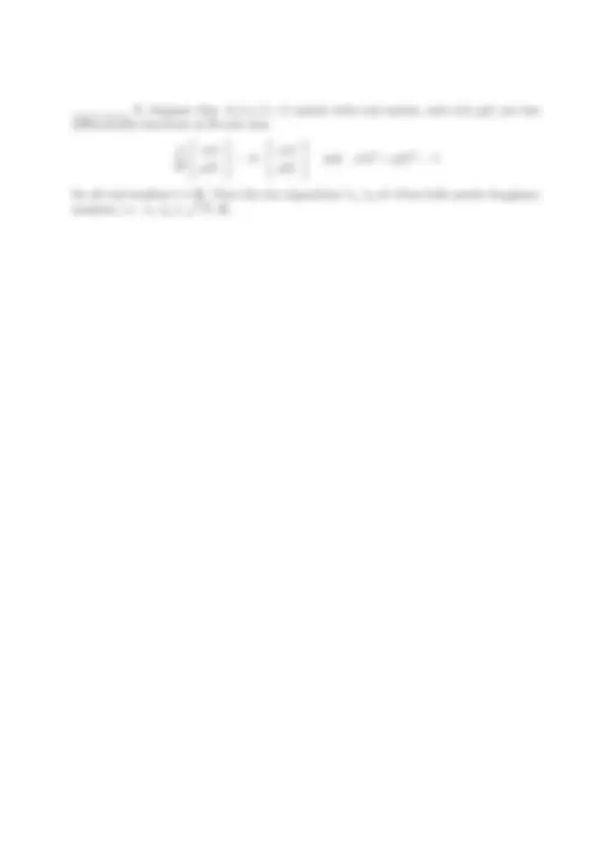



Study with the several resources on Docsity

Earn points by helping other students or get them with a premium plan


Prepare for your exams
Study with the several resources on Docsity

Earn points to download
Earn points by helping other students or get them with a premium plan
Community
Ask the community for help and clear up your study doubts
Discover the best universities in your country according to Docsity users
Free resources
Download our free guides on studying techniques, anxiety management strategies, and thesis advice from Docsity tutors
These are the notes of Exam of Linear Algebra which includes Initial Value Problem, General Solution, Erential Equation, Origin Parallel, Line, Vector Space, Dimension etc. Key important points are: Age of Information, Academic Integrity, Examination, Underlined Space, Diagonalizable, Diagonal Matrix, Invertible, Distinct Eigenvalues, Homogeneous, Differential Equation
Typology: Exams
1 / 16

This page cannot be seen from the preview
Don't miss anything!










Your signature
Problem Score (out of )
1 (10)
2 (10)
3 (10)
4 (10)
5 (10)
6 (10)
7 (10)
8 (10)
9 (10)
10 (10)
Total (100)
(b) Give an example of a 3 × 3 matrix B which has only two distinct eigenvalues and B is diagonalizable. Justify your answer.
xμi^ ·
m≥ 1
amxm
, i = 1, 2 , μ 1 , μ 2 ∈ C, μ 1 6 = μ 2
for two distinct complex numbers μ 1 and μ 2. Solve the differential equation you create. (Hint: The two numbers μ 1 , μ 2 in some of the easier examples are integers.)
The differential equation is.
The two linearly independent solutions are.
y′′^ − 5 y′^ + 6y = e^2 x
(Your answer should involve some unspecified constants.)
y =.
(b) Evaluate these two line integrals.
C 1
(x − y) dx + (x + y) dy x^2 + y^2
C 2
(x − y) dx + (x + y) dy x^2 + y^2
D = {(x, y, z) ∈ R^3 | x^2 + y^2 ≤ 4 , x ≤ z ≤ 8 }.
Let n be the unit normal vector field on S pointing outward relative to D. Calculate the flux (^) ∫ ∫
S
F · n dS
of the vector field F = 〈x, y^2 , z + y〉 = x~i + y^2 ~j + (z + y) ~k.
S
F · n dS =.
y(x) = 1 +
n=
an xn
defined on (− 1 , 1) which satisfies the following differential equation
(x − 1)
d^2 y dx^2
dy dx
Recursion formula:.
d dx
u(x) =
u(x),^ where^ u(x) =
u 1 (x) u 2 (x) u 3 (x)
(Your answer should involve some unspecified constants.)
u(x) =
C. The differential equation x d
(^2) y dx^2 + (cos(x)^ −^ 1)^
dy dx = 0 for the function^ y(x) on R is equivalent to a linear ordinary differential equation for y(x) on R which has no singular point.
D. Suppose that f 0 (x), f 1 (x), and f 2 (x) are polynomials in x, and f 2 (x) is not identically 0. If y 1 (x) and y 2 (x) are smooth functions (i.e. they can be differentiated infinitely many times) on R such that y 1 (0) = y 2 (0), y′ 1 (0) = y′ 2 (0), and
f 2 (x)y′′ i + f 1 (x)y′ i + f 0 (x)yi = 0 for i = 1, 2 ,
then y 1 (x) = y 2 (x).
E. Suppose that A is a 2 × 2 matrix with real entries, and x(t), y(t) are two differentiable functions on R such that
d dt
x(t) y(t)
x(t) y(t)
and x(t)^2 + y(t)^2 = 1
for all real numbers t ∈ R. Then the two eigenvalues λ 1 , λ 2 of A has both purely imaginary numbers, i.e. λ 1 , λ 2 ∈
Scratch Paper